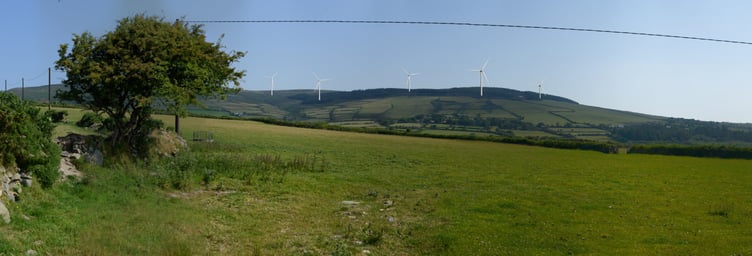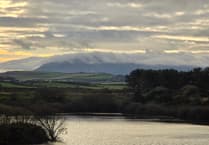The Manx landscape as we know and love it would be changed fundamentally by the construction of a wind farm in the hills.
As each individual turbine would be the height of Blackpool Tower, that statement is hard to refute. It is true regardless of your views on climate change or the aesthetics of wind installations.
Anyone doubting the impact of wind farms should note that they are banned from UK national parks, to protect the scenery.
So here are two key questions for the Isle of Man:
1) How much do we value the existing landscape of the Manx hills? It can be seen as special and precious, like a national park, or as expendable empty ground.
2) If we want to conserve that landscape but still fight against global warming, what are the alternatives to the proposed onshore wind farm?
These are big questions about political priorities and the future character of our island.
Instead of addressing them early on, the government seems to be waiting for the planning system to provide answers.
The Manx Utilities Authority has shortlisted two sites for onshore turbines, Druidale in the north and Earystane in the south. Both are in the midst of some of the Isle of Man’s finest upland scenery.
Each turbine including blades would be 150 metres or 500 feet tall, the same height as Peel Hill or Blackpool Tower. There could be up to twelve at Druidale or five at the more exposed and efficient Earystane site.
Either location has the potential to generate up to 30 per cent of the island’s electricity needs, says the MUA. Given the importance of renewable energy, that is a powerful proposition.
But there is also a strong argument, obvious yet so far ignored by politicians, that onshore wind farms are an inappropriate solution for the Isle of Man.
The problem is that these huge industrial structures would have a disproportionate impact in such a small scale topography. A wind farm at Earystane, for example, would dominate the entire south-west corner of the island.
The handful of Manx hills are the only ones we have got. Unlike our much larger neighbours we cannot spare swathes of moorland to be obliterated by turbines.
The uplands are defined by the rise and fall of their contours and skylines. The integrity of the landscape is lost when those outlines are broken by giant towers and blades. Other developments in the hills, like forestry plantations or reservoirs, do not have the same shattering effect.
But the MUA has deadlines to meet and is aiming to have a wind farm up and running by the end of 2026. As the project is still subject to the planning process that is an ambitious target.
The planning journey will not be an easy one, if the Isle of Man Strategic Plan is anything to go by.
This is the document, approved by Tynwald in 2016, which sets out the general principles and policies governing all land development. It is now under review by government, but the MUA scheme will presumably be progressed under its existing requirements.
The Strategic Plan notes that any feasible site for a wind farm ‘is likely to be exposed and have considerable visual impact.’
It states that the planning authorities ‘will assess any proposals for wind turbine installations by weighing the benefits of using such renewable energy sources against the environmental impact arising in any particular site.’
The document adds: ‘It is likely that the visual impact would be less detrimental on a coastal site than on a rural or upland one.’
The Strategic Plan goes on to declare: ‘The environmental impact of any proposals for alternative or renewable energy sources must be given similar scrutiny to other development proposals and not a lower test on the grounds that they are more environmentally friendly in energy terms.’
On the value of the island’s rural environment the Plan is unequivocal: ‘The countryside and its ecology will be protected for its own sake. Development which would adversely affect the countryside will not be permitted unless there is an over-riding national need in land use planning terms which outweighs the requirement to protect those areas and for which there is no reasonable and acceptable alternative.’
While an upland wind farm would adversely affect the countryside there is also an over-riding national need to access renewable energy. But is there really ‘no reasonable and acceptable alternative’?
That is the crucial question in this debate.

.jpeg?width=209&height=140&crop=209:145,smart&quality=75)
.jpeg?width=209&height=140&crop=209:145,smart&quality=75)


Comments
This article has no comments yet. Be the first to leave a comment.